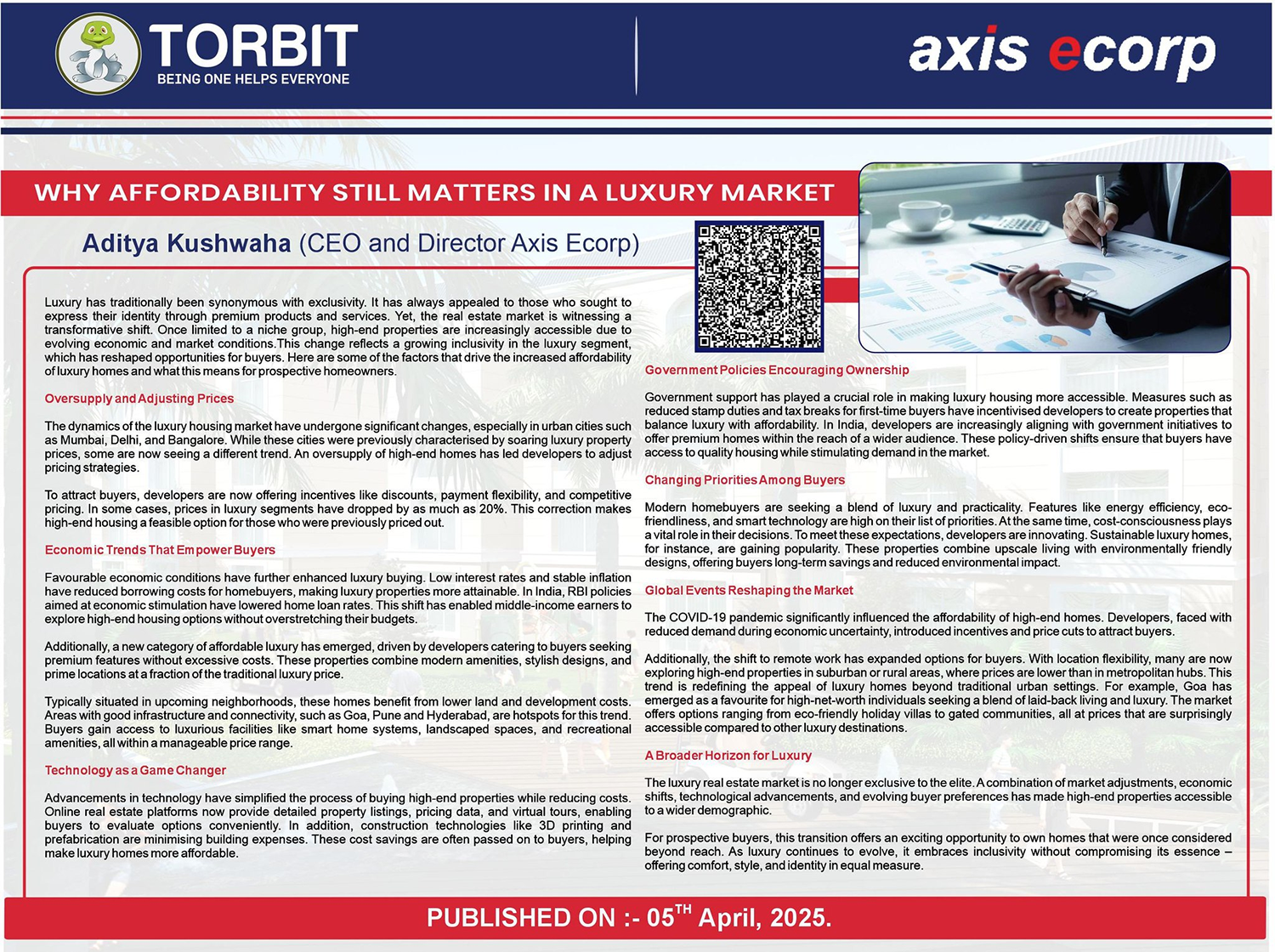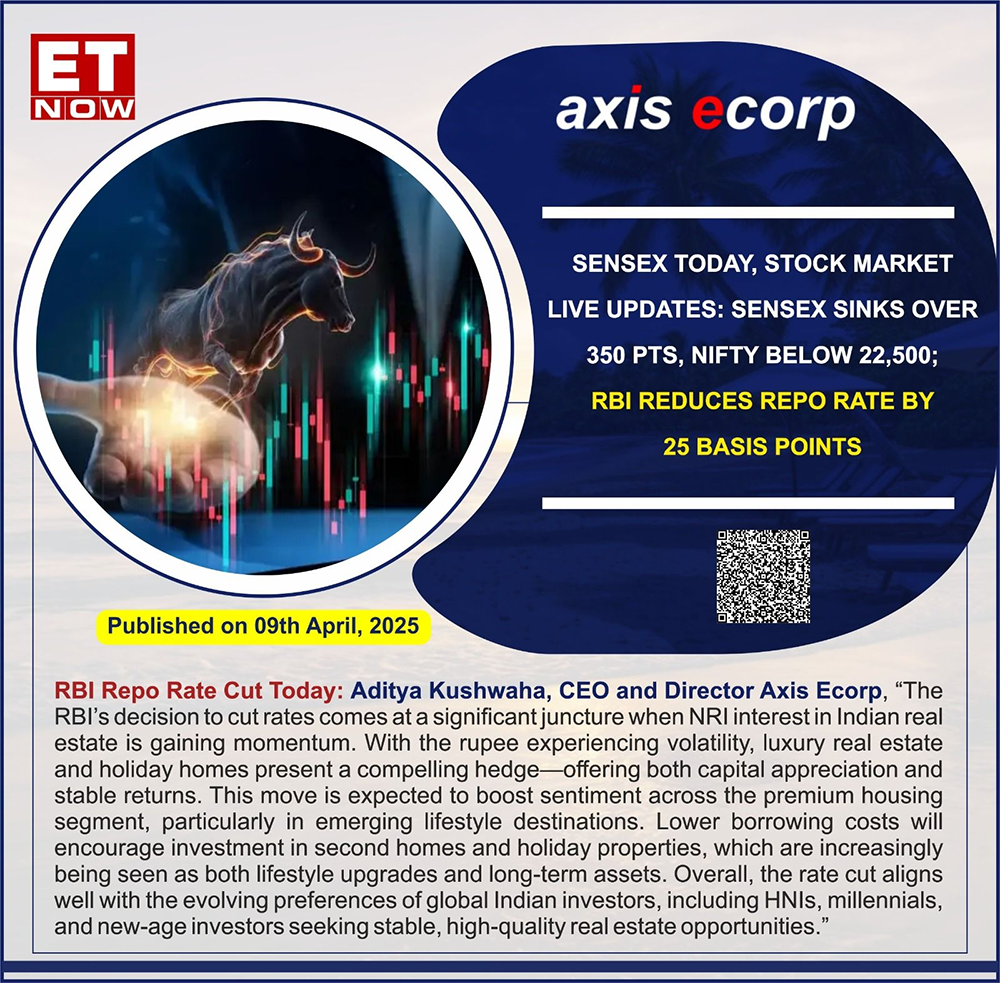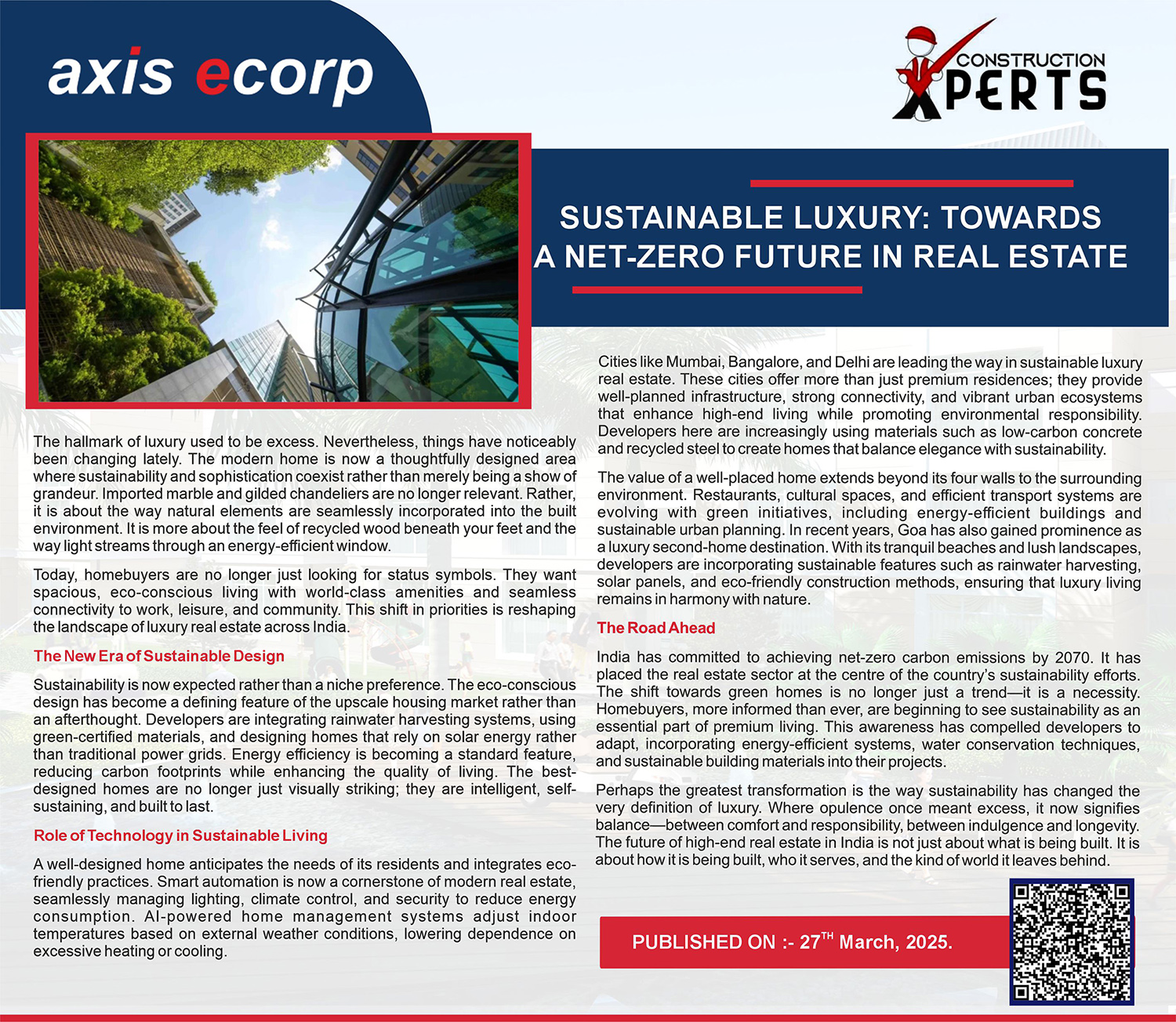Why Affordability Still Matters in a Luxury Market

Luxury has traditionally been synonymous with exclusivity. It has always appealed to those who sought to express their identity through premium products and services. Yet, the real estate market is witnessing a transformative shift. Once limited to a niche group, high-end properties are increasingly accessible due to evolving economic and market conditions.This change reflects a growing inclusivity in the luxury segment, which has reshaped opportunities for buyers. Here are some of the factors that drive the increased affordability of luxury homes and what this means for prospective homeowners.
Oversupply and Adjusting Prices
The dynamics of the luxury housing market have undergone significant changes, especially in urban cities such as Mumbai, Delhi, and Bangalore. While these cities were previously characterised by soaring luxury property prices, some are now seeing a different trend. An oversupply of high-end homes has led developers to adjust pricing strategies.
To attract buyers, developers are now offering incentives like discounts, payment flexibility, and competitive pricing. In some cases, prices in luxury segments have dropped by as much as 20%. This correction makes high-end housing a feasible option for those who were previously priced out.
Economic Trends That Empower Buyers
Favourable economic conditions have further enhanced luxury buying. Low interest rates and stable inflation have reduced borrowing costs for homebuyers, making luxury properties more attainable. In India, RBI policies aimed at economic stimulation have lowered home loan rates. This shift has enabled middle-income earners to explore high-end housing options without overstretching their budgets.
Additionally, a new category of affordable luxury has emerged, driven by developers catering to buyers seeking premium features without excessive costs. These properties combine modern amenities, stylish designs, and prime locations at a fraction of the traditional luxury price.
Typically situated in upcoming neighborhoods, these homes benefit from lower land and development costs. Areas with good infrastructure and connectivity, such as Goa, Pune and Hyderabad, are hotspots for this trend. Buyers gain access to luxurious facilities like smart home systems, landscaped spaces, and recreational amenities, all within a manageable price range.
Technology as a Game Changer
Advancements in technology have simplified the process of buying high-end properties while reducing costs. Online real estate platforms now provide detailed property listings, pricing data, and virtual tours, enabling buyers to evaluate options conveniently. In addition, construction technologies like 3D printing and prefabrication are minimising building expenses. These cost savings are often passed on to buyers, helping make luxury homes more affordable.
Government Policies Encouraging Ownership
Government support has played a crucial role in making luxury housing more accessible. Measures such as reduced stamp duties and tax breaks for first-time buyers have incentivised developers to create properties that balance luxury with affordability. In India, developers are increasingly aligning with government initiatives to offer premium homes within the reach of a wider audience. These policy-driven shifts ensure that buyers have access to quality housing while stimulating demand in the market.
Changing Priorities Among Buyers
Modern homebuyers are seeking a blend of luxury and practicality. Features like energy efficiency, eco-friendliness, and smart technology are high on their list of priorities. At the same time, cost-consciousness plays a vital role in their decisions. To meet these expectations, developers are innovating. Sustainable luxury homes, for instance, are gaining popularity. These properties combine upscale living with environmentally friendly designs, offering buyers long-term savings and reduced environmental impact.
Global Events Reshaping the Market
The COVID-19 pandemic significantly influenced the affordability of high-end homes. Developers, faced with reduced demand during economic uncertainty, introduced incentives and price cuts to attract buyers.
Additionally, the shift to remote work has expanded options for buyers. With location flexibility, many are now exploring high-end properties in suburban or rural areas, where prices are lower than in metropolitan hubs. This trend is redefining the appeal of luxury homes beyond traditional urban settings. For example, Goa has emerged as a favourite for high-net-worth individuals seeking a blend of laid-back living and luxury. The market offers options ranging from eco-friendly holiday villas to gated communities, all at prices that are surprisingly accessible compared to other luxury destinations.
A Broader Horizon for Luxury
The luxury real estate market is no longer exclusive to the elite. A combination of market adjustments, economic shifts, technological advancements, and evolving buyer preferences has made high-end properties accessible to a wider demographic.
For prospective buyers, this transition offers an exciting opportunity to own homes that were once considered beyond reach. As luxury continues to evolve, it embraces inclusivity without compromising its essence – offering comfort, style, and identity in equal measure.






